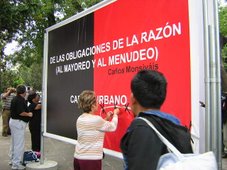Charting over 100 years of Indian migration to New Zealand
Sydney, Dec 10 (IANS) Did you know an Anglo-Indian from Goa, Edward Peters, was the first to discover gold in the Otago region of New Zealand that led to the gold rush of the 1860s?
Such nuggets of information can be found in the book "Indian Settlers: The History of a New Zealand South Asian Community" published by Otago University Press.
From low-wage work to high-profile jobs, from facing discrimination to integrating with the mainstream, the book traces the journey of Indian migrants in New Zealand.
It says the origin of the permanent Indian community dates back to the arrival of two Sikh brothers around 1890. In the late 1890s, Abraham Singh & Co became the first Indian business to be established in Wanganui, says the book. Subsequent Indian settlers hailed from Punjab, Gujarat and some from Sindh.
From only 671 in 1921, the Indian migrant population in New Zealand has swelled to 105,000, according the 2006 census.
Jacqueline Leckie, the author of the book and Programme Coordinator of Social Anthropology at the University of Otago in Dunedin, told IANS, It is the first full length history of Indians in New Zealand.
Leckie points out to the change in occupation and class of Indian migrants. She says, "The original Indian settlers mostly worked as labourers, hawkers and bottle collectors, cleaners and cooks and then moved on to establish fruit and vegetable businesses and small farms. Many continued to be relatively low-waged workers".
"Today, this has changed with access to higher education and tertiary qualifications, many Indians are in professional, technical and clerical employment or in business. However, the myth of the Indian corner shop owner is still prevalent among many Kiwis", she adds.
While doing her doctorate thesis on the history of Gujaratis, Leckie says, "I learnt that New Zealand immigration laws were discriminatory towards Indians. I was struck by the discrimination and stereotypes many Kiwis had in the past towards Indians in the country. Much of this prejudice was based on ignorance."
In the 1920s, the White New Zealand League tried to have Indians excluded from buying land or operating businesses. Indians were accused of "undercutting" the "white man" and were said to pose a threat to the morality of the nation.
Until 1945, most of the settlers were male, some inter-marrying with local women, the indigenous Maori and Pakeha or European settlers.
During her research she also became aware that many New Zealand Indians, especially younger generations, knew very little about their own community's history.
Leckie says, "Academic research has been important in breaking this ignorance but unfortunately academic publications do not usually reach a wider audience."
In 2003, she was asked by New Zealand Indian Central Association (NZICA), which was formed in 1926 to represent Indian migrants and their interests, to write a history of Indians in New Zealand that would have a broader appeal and also be meaningful to the Indian community in New Zealand.
Leckie told IANS, "I was motivated to write this book because I wanted to reciprocate the generous support many Indian families in New Zealand, Fiji, India and the United Kingdom have given to me over the decades. I have been humbled by their willingness to share their life stories and also the kindness and hospitality extended to me.
"I also wanted to write a history of the original settlers as that is part of the mainstream of New Zealand's history", she adds.
She received vital information and hundreds of photographs from various branches of the NZICA that added a whole new flavour to her academic research done under the supervision of professor Hew McLeod, who has published a history of Punjabis in New Zealand.
During much of the 20th century until the late 1980s, Indians in New Zealand were a "quiet" minority with very little public visibility.
This radically changed as Indian families from Gujarat and Punjab relocated here and more children were educated in New Zealand. The number of New Zealand-born Indians also rose and by the 1970s there was more marriage within the community here.
However, it was after 1984, with a more liberal immigration policy that the demographics of New Zealand's Indian community really changed. This was because of increased immigration, especially of skilled and tertiary educated Indians from South Asia and other outreaches of the global India diaspora. A major change was the emigration of thousands of Indo-Fijians after the 1987 and 2000 coups there.
Leckie says, "The result is that the Indian community today is more diverse than 30 years ago. It also has a much stronger public presence as indicated by the building of temple, gurdwara, masjid and huge public festivals such as Diwali."
The book concludes with the appointment in 2006 of Indo-Fijian Anand Satyanand as the first Asian to be been sworn in as New Zealand's 19th governor general.
(Neena Bhandari can be contacted at neena@india-voice.com)



No comments:
Post a Comment